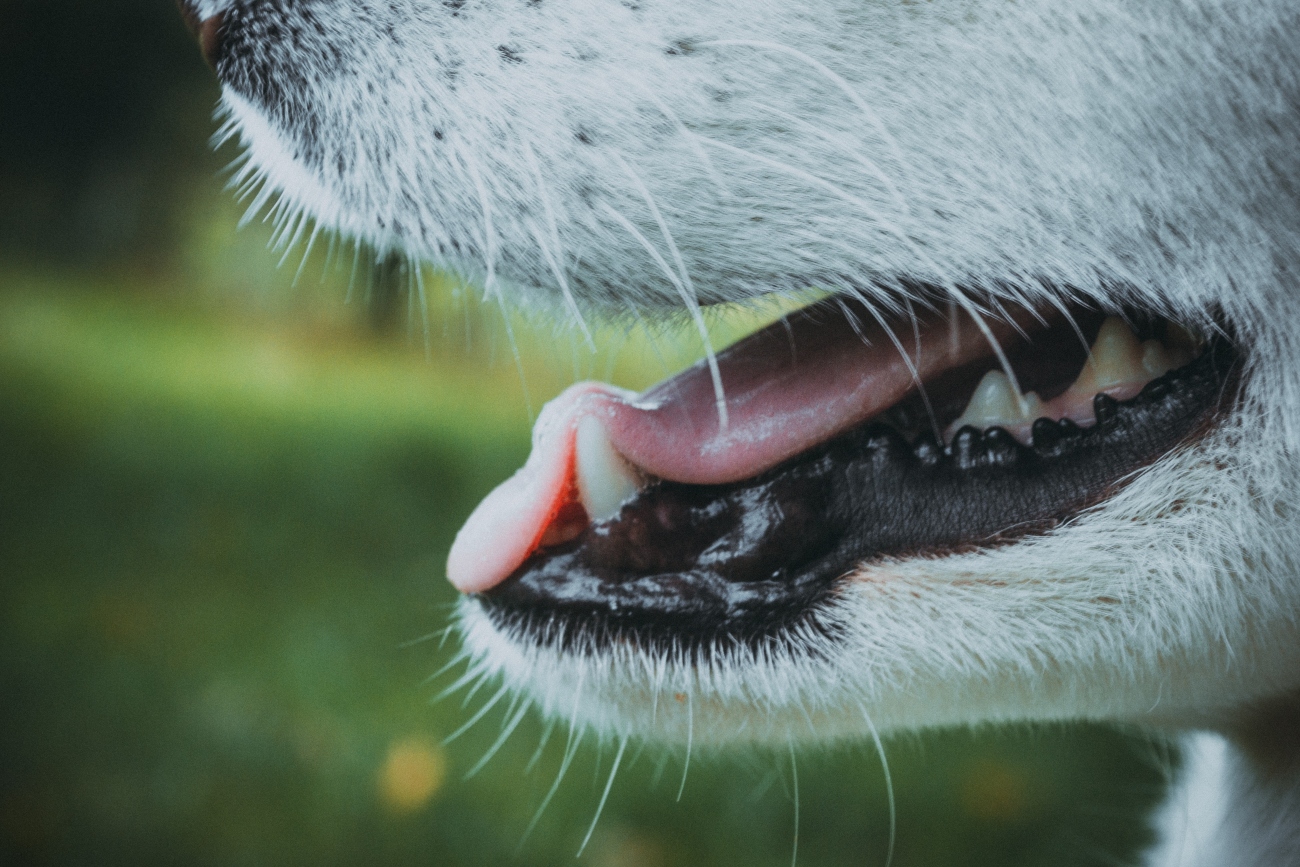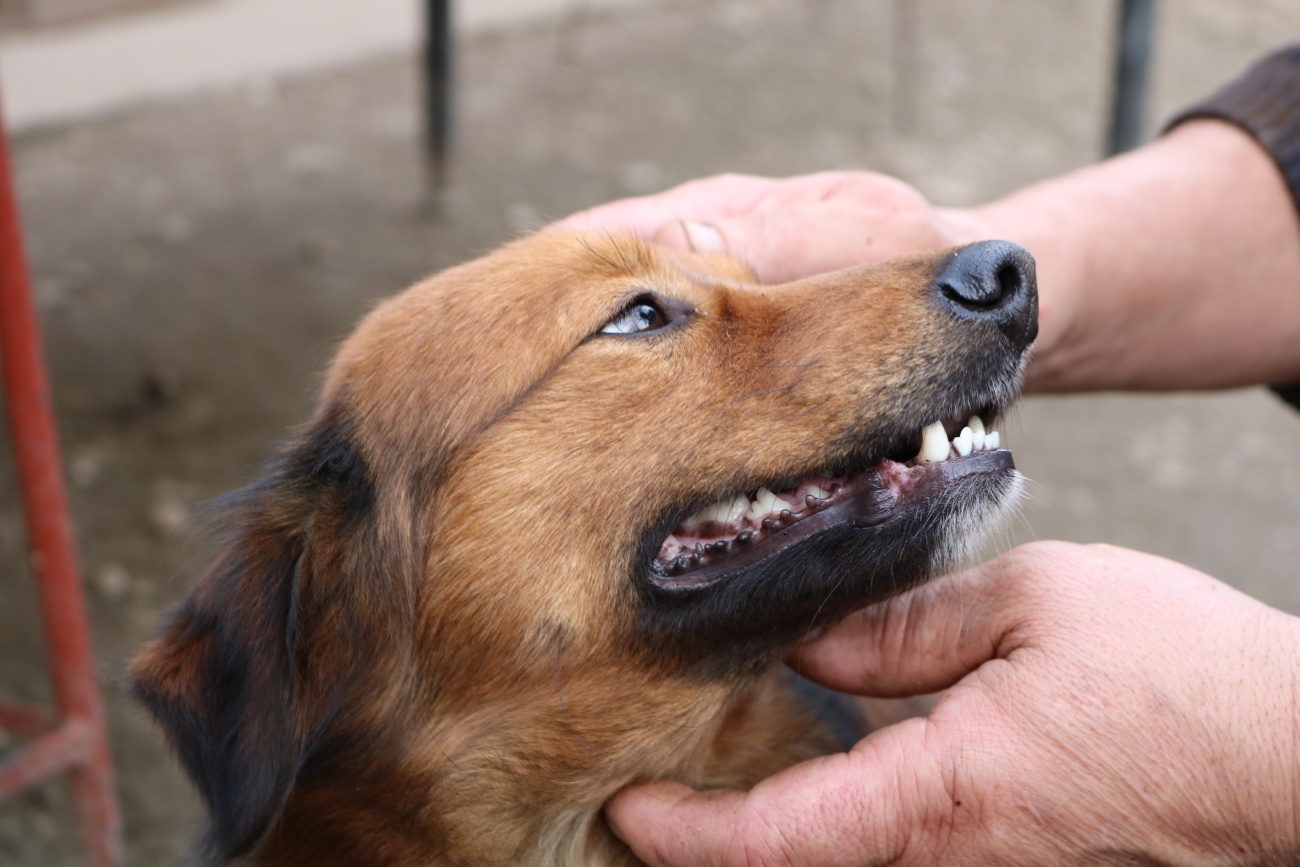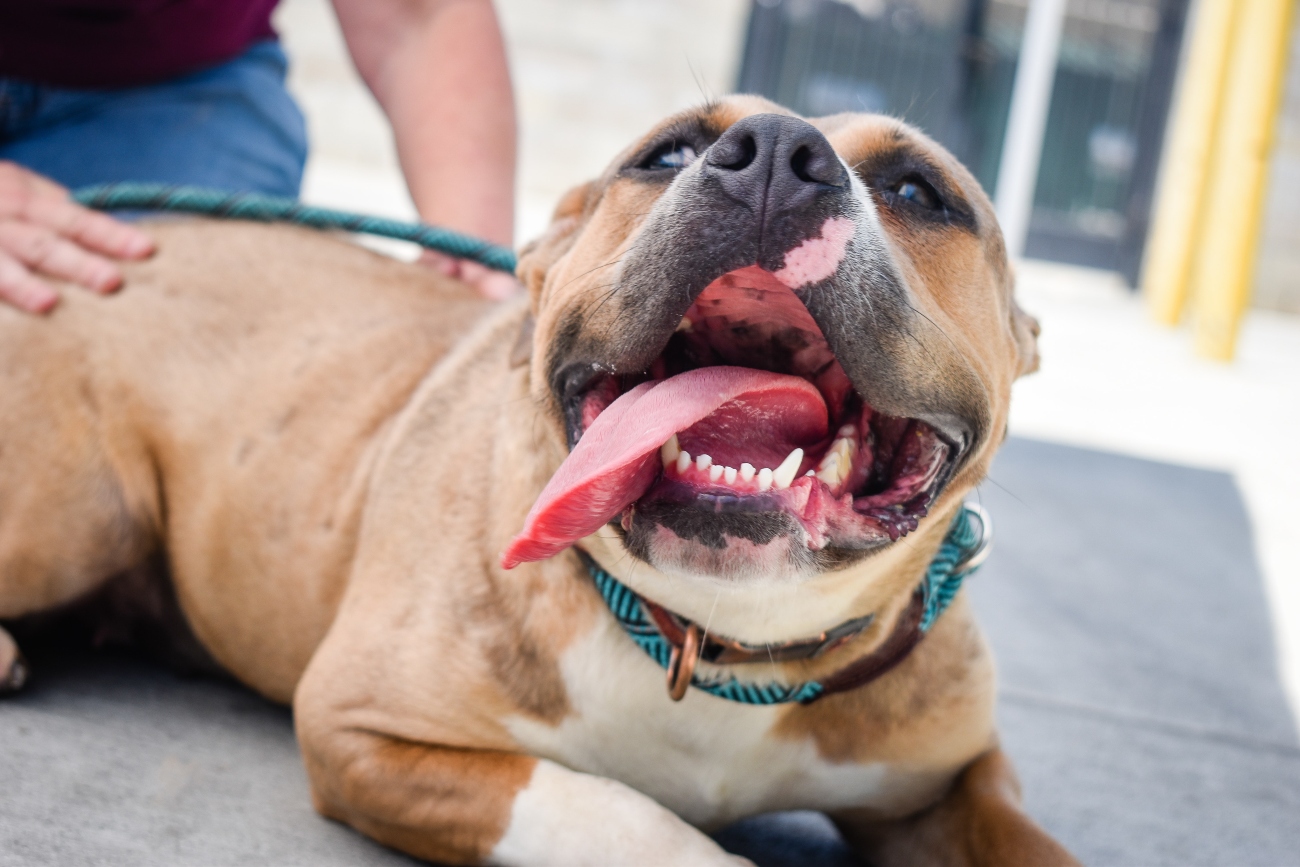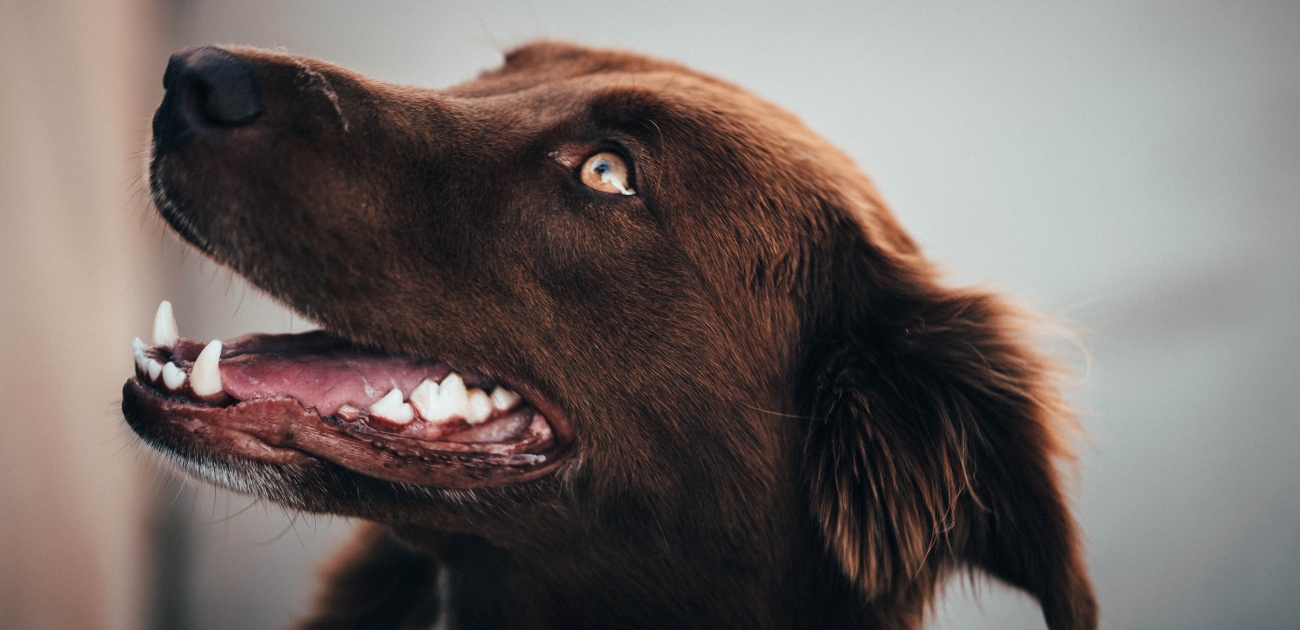
How to clean an old dog’s teeth
23rd December, 2021
Keeping an older dog in tip top shape requires owners to pay attention to every part of their anatomy. From wet noses to waggy tails, and everything in between. However, an area that’s sometimes ignored is those impressive teeth.
If you’ve avoided the issue of dental hygiene in their younger years it might be time to change that now. That’s why we’ve put together this list of the simplest ways to clean your dog’s teeth, many without a brush in sight! And at the end, we’ve also provided you with some tips for spotting when dental problems might be getting serious.
Remember, dental care is just one of the many ways your vet can help your older dog. If the cause is something more serious, senior dog insurance from Petwise could help cover the cost of treatment.

How to clean an old dog’s teeth
Over the years your old dog’s teeth have come in for a fair amount of punishment. And if their teeth aren’t properly cared for, then they’re going to encounter some painful and unpleasant problems as they get older.
The Blue Cross animal charity says the best way to keep your dog’s dental hygiene in check is with daily teeth brushing. So, we’re going to take a look at that sometimes-tricky procedure first. Remember even if you’ve never brushed your older dog’s teeth before don’t despair, you’ll soon get the hang of it. You really can teach an old dog a new trick! Follow this six-stage process for success.
- Buy some toothpaste suitable for dogs and a soft toothbrush from your vet. Toothpaste designed for humans can be toxic to dogs as it often contains the artificial sweetener xylitol. For more on xylitol poisoning in dogs read this blog.
- To get them used to the flavour, add a pea-sized amount of toothpaste to their regular food. Dog-friendly toothpaste comes in several flavours including meat, mint and malt. There’s bound to be one perfect for your picky eater!
- When they’ve got used to the new flavour, and if you’re feeling confident, put some on your finger and let them lick it off.
- If this goes down well, then start to gently rub your finger around the inside of their mouth. Try to follow the gum line as you would with a brush to get them used to the sensation. Be guided by your dog, and always stop if they seem unhappy. You can always give it a go tomorrow.
- Now try using the toothbrush. Simply allow them to lick the toothpaste off first. Then you can move on to gently brushing the incisors and canines using a circular motion. Before finally moving onto the premolars and molars.
- Brushing should be repeated every day or two. Or at an absolute minimum, once a week. But remember to always make it a positive experience for your dog with plenty of praise and healthy treats.
Regular teeth brushing really is a must for great doggy oral health. Saving your trusty four-legged friend from potential pain and disease, while saving you the cost of expensive dental care. It’s all part and parcel of being a responsible dog owner.
Other easy ways to care for an old dog’s teeth
Getting your old dog used to having its teeth brushed is the best thing you can do for their dental health. But what other ways are there to get those gnashers in tip-top condition? Let’s take a look!
Dog dental wipes
With no need to use a brush, dog dental wipes can be an easier way to quickly clean your dog's teeth. Particularly if your dog just isn’t happy with a toothbrush in their mouth. Simply wrap the wipe around your finger and off you go!
Pros of dog dental wipes
- Simple and easy to use.
- Dogs are usually more tolerant of your finger in their mouth.
- No need to clean-up.
- Gentle on your dog’s mouth.
Cons of dog dental wipes
- Usually only single-use.
- Can get expensive if used daily.
- Not the best option for heavier plaque and tartar build-up.
Bones
This simple but controversial choice is worth considering. Gnawing on a raw, real-meat bone is great for naturally removing plaque and tartar. However, the RSPCA warns they can be hazardous and you should always ask your vet for advice first before feeding your dog bones.
And keep an eye on them if they do eat them. In particular, you shouldn’t give your dog cooked bones as they can splinter, crack, and cause cuts, blockages, and other choking problems for your dog.
The pros of bones
- 100% natural way to remove plaque and tartar.
- Long-lasting.
- Healthy and natural.
The cons of bones
- Potential choking hazards/splintering problems.
- Could break old or wobbly teeth.
- Having raw animal bones around the house isn’t for everyone.
- Depending on your location, they can be hard to find.

Food supplements
Having a balanced healthy diet is as vital for our canine pals as it is for us. There are a few different dog supplements on the market designed specifically to freshen your dog’s breath and to soften and remove plaque.
Pros of food supplements
- Easy to use – often they just need to be sprinkled into food.
- Doesn't require putting your hands near your dog's mouth.
- Usually a natural/healthy option.
Cons of food supplements
- Can be expensive.
- Used mostly to soften plaque. So additional cleaning will probably be required.
- Some dogs dislike the taste.
- Most need to be given every day, although a little can go a long way.
Senior dog insurance arranged through Petwise includes a senior food contribution if your older dog needs their diet tweaking.
Dental chews
Dental chews are yet another healthy and tasty way to clean your dog’s teeth without brushing. And without the potential hazards of bones. Usually made from natural, simple ingredients such as deer antler or yak's milk, they aren't gobbled up too quickly, and are great at promoting that natural plaque removal action.
Not only do chews help keep teeth clean but they are also useful as training tools to overcome chewing and biting problems – keeping your older dog’s mouth, mind, and of course, teeth well occupied.
Pros of dental chews
- Helps overcome problem chewing behaviour.
- Tasty for dogs.
- Easy to use.
- Come in different shapes and sizes to maintain interest.
- Comes from a natural and sustainable source.
- Little mess and odour.
- Can be low in fat, high in nutritional value.
Cons of dental chews
- Some dogs can gnaw through them quickly.
- Some dogs just don't like chewing as much as others.
- Potential to splinter or break if chewed too aggressively.
Dog dental sprays and gels
Using doggy dental sprays or rubbing gel onto their teeth might require a little bit of training, but probably less than when you taught them to enjoy toothbrushing! Spraying something into your dog’s mouth might also cause them to snap so be careful of your fingers.
Similar to dental wipes, there isn't much scraping of plaque or tartar. Instead, the active ingredients in the sprays and gels work to soften the plaque and tartar.
Pros of sprays and gels
- Very effective at controlling bad breath.
- Usually made of natural ingredients.
- Breaks down plaque and works to prevent tartar build-up.
- Useful as a complement to toothbrushing.
- Can help brighten teeth.
Cons of sprays and gels
- Requires putting your hands near your dog's mouth.
- Some dogs won't like the taste.
- Can be expensive if used regularly.
Dental treats
Tasty treats with ridges and grooves designed to scrape off plaque and tartar? What’s not to like? There are lots of useful dental treats to help keep your dog's teeth sparkly fresh. No doubt your older pup will enjoy trying them all out until they find their favourite!
Pros of dental treats
- Easy for you, tasty for them.
- Chewy texture to reduce plaque and tartar.
- Can be low in calories.
- Nutritional and made of soluble ingredients that easily break down for safe and easy digestion.
Cons of dental treats
- Expensive if used frequently.
- Need to take extra calories into account.
Chew toys
If you’ve had a dog for a number of years then you’re likely to have a few chew toys lying around the house or garden. Encouraging your older dogs to gnaw and chew these could help clean their teeth.
Pros of chew toys
- Easy for you.
- No clean-up necessary.
- Helps teach proper chewing behaviour.
- Keeps the dog busy and is a great boredom buster.
Cons of chew toys
- Some are destroyed easily, particularly by larger breeds or those with more powerful jaws.
- Can prove expensive if you have to replace them often.
- Potential choking hazards from broken pieces.
- No nutritional benefit, unlike chews or bones.
Water additives
Yet another tooth cleaning solution for dogs that doesn’t need a brush is water additives. Simply add a capful to your dog's daily water bowl for all day protection against build-up of plaque and tartar.
Pros of water additives
- Simple to use.
- No mess or clean-up.
- Gives all-day protection.
Cons of water additives
- Can prove expensive over time.
- More effective options are available.
- Some may contain undesirable chemicals. So always check the label.
Healthy fruits and vegetables
Having spent thousands of years living and eating together, dogs and their human counterparts are omnivores. So, there’s nothing preventing your dog from eating both meat and vegetables. This is great news for their dental health as many fruits and vegetables are great for cleaning your dog's teeth.
And with so many doggy treats out there containing sugars, syrups, and other nasty ingredients, it’s much better to give them something healthy to chew on. In terms of fruits, Blue Cross recommends apples (without pips), strawberries and oranges (in moderation). In terms of vegetables, peas, sweet potato, and carrots are great for your pooch. Battersea Dogs & Cats Home has a long list of things you shouldn’t feed your dog so it’s well worth checking to be on the safe side.
Fruit and vegetables are a great source of vitamins, minerals and fibre. But they should only be a small part of your dog’s daily diet. If you’re not sure about how much they should eat, give your vet a call to discuss.
Pros of healthy fruit and vegetables
- Healthy and natural.
- Often inexpensive and freely available.
- Contains plenty of vitamins and minerals perfect for healthy teeth.
Cons of healthy fruit and vegetables
- Not specific for cleaning teeth.
- Not all fruits and vegetables are dog-friendly.
- Not all dogs love eating all fruits and vegetables.

Warning signs of dental problems
Being aware of the signs of dental disease can help you keep your dog from some serious pain. Regular vet check-ups are an important part of any senior dog's health care regime. Some of the general signs of dental disease are as follows:
- Plaque and tartar build-up.
- Gingivitis (inflammation of the dog’s gums).
- Pain or other signs of discomfort when chewing.
- Dark brown spots on teeth.
- Broken teeth.
- Weight loss or loss of appetite.
- Excessive drooling.
- Blood in saliva.
- Mouth ulcers.
- Bad breath. There are lots of reasons why your old dog might have bad breath. Find out more in our recent article on this smelly subject.
- Withdrawn, not playing with favourite toys or avoiding strokes to their nose or head.
- Sneezing or nasal discharge.
- Swelling around mouth or jaw.
If you're at all concerned, contact your vet and get your pooch looked at straight away.
Get senior dog insurance from Petwise
Ensuring that your senior dog receives the very best level of care is what the team at Petwise is here to do. That’s why there’s no upper joining age limit for taking out insurance cover through us. We believe that every dog deserves great protection throughout its life.
Our senior dog insurance comes with seven cover levels to choose from, so there's bound to be one that suits your budget and your dog’s particular needs. There’s even cover for overseas treatment and emergency boarding fees, too.
And when your dog reaches the end of their happy life, we also provide a bereavement helpline and farewell cover.
Finding senior pet insurance is so simple with Petwise – get a quote today.